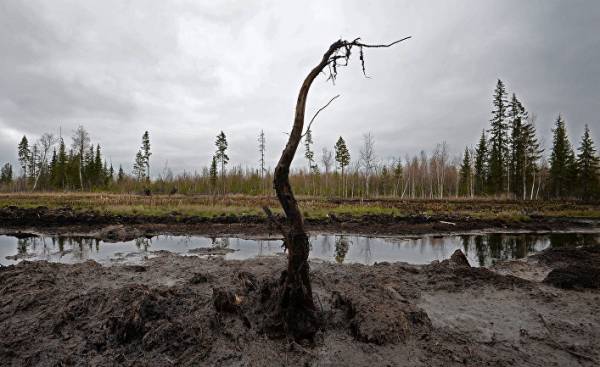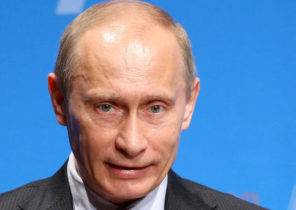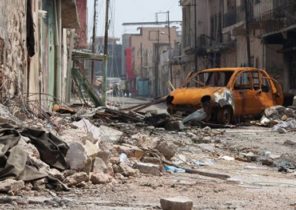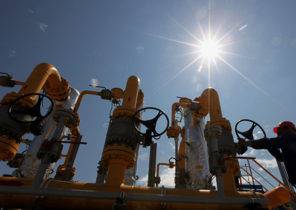
The first public protests against anti-environmental government measures have arisen before the collapse of the Soviet Union. In mass media periodically there are discussions about the construction of a huge dam for Siberian HPPs: people were afraid of the possible consequences. Anyway, weak social movements failed to stop work. Were flooded a huge area, destroyed thousands of hectares of forests, displaced tens of thousands of residents of the doomed villages.
Later has this crazy idea of turning the Siberian rivers flow from South to North for irrigation in the Soviet Central Asian republics. She gave birth to a new wave of protests and fears about the environment. From a scientific point of view, this idea was crazy and absurd. Writers and journalists launched a debate, which is connected and simple Siberians.
In the 1960-ies of the environmental movement originated in the student environment, primarily at the biological faculty of MSU, where groups were formed for the protection of the environment. Little by little the biologists were joined by students and teachers of other faculties (agronomy, geography…), and similar groups appeared in other University of the country. They maintained contact with each other and began to unite around the interests of protection of reserves and waters (primarily the Volga and lake Baikal). In this purely environmental activities was not an ounce of politics, because in those days above all dominated by the Communist party.
After the disaster in Chernobyl on 26 April 1986, which jeopardized the health of millions of people, appeared specializing in radiation protection NGOs. At the time of a nuclear accident in Ukraine, the information was not disclosed. Moreover, no one even reported about the disaster. May 1 in the contaminated area millions of people took to the street on labor day! Accurately assess the impact of the accident on human health is still impossible due to the lack of lists of victims from radiation (with the exception of the cohort of the “liquidators”). About the health dangers of radiation in that time almost nothing was known, since the environmental media did not exist, and the civil service kept in contact with environmentalists.
Later, during Mikhail Gorbachev’s perestroika, the movement was strengthened with the formation of the Russian socio-ecological Union. Then there were other environmental organizations in various fields: law, education, child health… NKO “Dront” (another name for the extinct Dodo bird) is one of the most famous and active of them. Among his activities included the discovery of nearly 200 unique natural features or the creation of nesting places of rare birds of prey. The centre also deals with programs for kids: they help adults to clean water and to collect garbage in the woods. Organized environmental summer camps.
Appeared and the first environmental media. Several NGOs decided to unite and create a national newspaper “Green world”, which is published now in electronic form.
The rise between 1991 and 2001
Anyway, the real heyday of the environmental movement in Russia was in the following decade, from 1991 to 2001. It began to get support from foreign organizations like the Heinrich böll Foundation and the MacArthur Foundation. Russian and foreign institutions have established scientific contacts, allowing you to run common projects. Despite the serious economic problems of the country, the government gradually began to pay attention to the environment. Regional media have to tell the readers about the pollution of air in towns and villages, pollution of lakes, destruction of forests.
Developed municipal and regional assessment program ecological state of the territory, which involved NGOs. To cite one example: in Astrakhan, causing concern of the residents of the project of construction of gas processing plant was subjected to in-depth environmental review. The company’s management has established around a system of environmental control in Russia was first created by the Institute of environmental medicine. We are talking about one of the few projects with active participation of NGOs, which published environmental data during the construction of the plant, and after its launch. In addition, in those same years, failed to stop the construction of a landfill on the elimination of chemical weapons in the vicinity of the Volga.
Gradually Russian NGOs established contacts with foreign colleagues on specific issues. In addition, offices were opened in Russia major international institutions like WWF and Greenpeace. Their activities encouraged volunteers to participate in the “green” movement. Clearly defined environmental priorities has allowed to involve local activists.
Killed in 2015, opposition leader Boris Nemtsov began his political career in the environmental movement and soon became the Governor of Nizhny Novgorod region. At his initiative the head of the environmental Department of the municipality was appointed the Director of the local environmental center. In addition, thanks to him, President Boris Yeltsin took academician and a prominent environmentalist Alexei Yablokov, counselor for health and environment. Subsequently Yablokov founded the Center for environmental policy with offices in many regions of the country. Some environmental NGOs have started to show an interest in politics that has allowed activists to become members of national or regional Parliament and even make a career in administration.
Since 2001 recession
Anyway, with the improvement of the economic situation in the country due to the increase in hydrocarbon prices and the inflow of foreign capital began to arise around the construction of pipelines and gas pipelines, metallurgical and cement plants, and other enterprises. Businessmen began to see the environmental constraints, the obstacle to economic growth. This was highlighted during the discussion of the project of construction of the pipeline along the coast of lake Baikal, the deepest lake in the world, which is part of the UNESCO world heritage site.
The project was met with stiff opposition from NGOs and academia. In Irkutsk and other cities held demonstrations. Eventually it was canceled in 2006 by President Vladimir Putin. The fate of the lake disturbed the local residents and ecologists and even in connection with a pulp and paper mill, who worked for his Bank for many years, dumping of waste water. The war with him lasted two decades until it finally closed three years ago.
In 2000, the Ministry of environment was abolished and its functions transferred to another Agency. This date marked the decline of environmental activities at the government level. The regional Parliament is now able to pass only one or two “green”. Some large companies create psevdoallergicakie NGOs, which defend their interests. In addition, the authorities have become tougher to control the activities of local environmental organizations.
So, despite the protests of residents against the motorway construction through the Khimki forest, it in the end, all was cut down. The project of construction Nickel mines and metallurgical plant in the heart of the European part of Russia, on the most fertile lands, faced the resistance of local farmers who talk about the impact on agriculture and the possible contamination of groundwater. The war with the metallurgical company has been going on for a year. Some activists went to prison, but the construction of the mine was suspended.
In the Urals, formed an equally alarming situation, and the residents opposed the construction of the mine. The indigenous population of the Altai Republic, in turn, are protesting against plans for a gas pipeline through a sacred place for him. Greenpeace activists condemn oil production in the Arctic, arguing that the technology of protection to this region have not yet reached an adequate level.
In any case, today the environmental movement has weakened. Problems accumulate, and the situation could any moment escalate.







